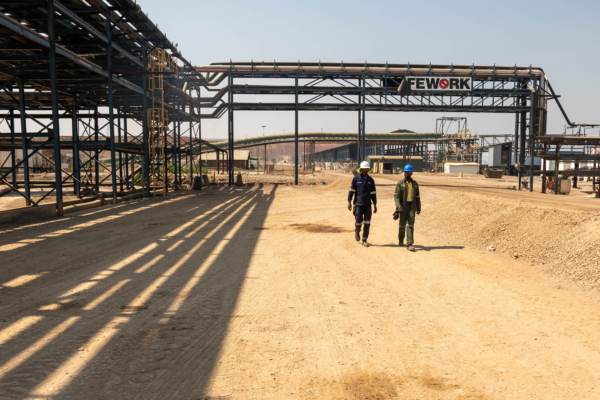The United States Department of State senior officials have assured African countries that regardless of the outcome of the US election, a project to fund the construction of a mineral transportation railway in Africa will continue. This is seen as a significant measure by the West to counter the influence of China.
The acting special coordinator of the State Department’s Partnership for Global Infrastructure and Investment (PGI), Helaina Matza, stated during an online briefing on Wednesday (August 28th) that significant progress has been made on a railway project known as the “Lobito corridor”. This project aims to connect the copper-cobalt mines in the Democratic Republic of Congo (DRC) with a major port in Angola on the Atlantic Ocean, facilitating the transportation of crucial metals.
Congo DRC accounts for about 70% of global cobalt production. Cobalt is an essential component of lithium-ion batteries and is considered crucial for the transition to renewable energy.
Over the past decade, China has been increasing its influence in Africa through the Belt and Road Initiative. Angola, being the largest recipient of Chinese loans in Africa, seemed like a country where the West could not intervene. However, the poorly constructed railway projects by China led Angola to turn away from Chinese investments. Ultimately, in 2022, the West, united, secured a 30-year concession for the Lobito project, reclaiming influence in the region.
The “Lobito Corridor Project” is part of the Group of Seven’s (G7) Partnership for Global Infrastructure and Investment plan. This initiative aims to counter the expanding influence of China in the Third World, mitigate the economic impacts of the Russia-Ukraine conflict on developing countries, and allocate $6 trillion by 2027 to drive high-quality, sustainable infrastructure development.
The Biden administration strongly supports the Lobito Corridor Project, considering it as one of the flagship initiatives under the State Department. Biden has stated that this railway project is a “game-changing regional investment”.
However, with the US election facing uncertainties, there are doubts regarding whether Trump would continue with this initiative if re-elected.
Matza addressed these concerns by stating, “Many aspects of this project have received strong bipartisan support, particularly concerning how we handle energy transition and our support for clean energy and critical mineral supply chains.”
“We have seen the preliminary investments in supporting the region yield returns, which benefits not only the United States but also our partner countries,” Matza added.
From August 21-28, Matza visited Congo DRC and Tanzania to advance the project. The US is collaborating with these nations to develop plans for constructing a railway from Angola to Zambia’s copper mining area, eventually forming the “Trans-Africa Corridor” extending to Tanzania, connecting the Atlantic and Indian Oceans.
Initially, the US proposed $250 million in funding from the US International Development Finance Corporation (DFC). The institution later agreed to provide $553 million in funding, subject to congressional approval. The first installment is expected to be paid in the first quarter of 2025.
The “Central African Copperbelt Region”, shared by Zambia and Congo DRC, has become a focal point for regional railway revival. Businesses and governments aim to have sufficient transportation capacity to facilitate metal circulation.
Currently, 80% of goods in Africa are transported by road, with truck journeys to ports sometimes taking over a month, and transit queue times lasting several days. Transporting goods by rail could significantly reduce time and costs.
Matza emphasized that the US will not burden African countries with unsustainable levels of debt like China.
She stated, “What we’re doing is not an attempt to expand debt for our country.”
“Instead, we are bringing developers to interested countries or collaborating with some developers in need of assistance and support to complete projects, giving them confidence to receive support from both governments and financing.”
“This is a very different model that can help government partners undergoing debt restructuring,” she said.
Matza stressed that this model is not primarily for resource extraction but for promoting local economic growth.
“For us, it’s not about mining raw ores. In fact, we are considering how to fund the selective mining ecosystems of partner countries to become part of the global battery ecosystem,” she added.

